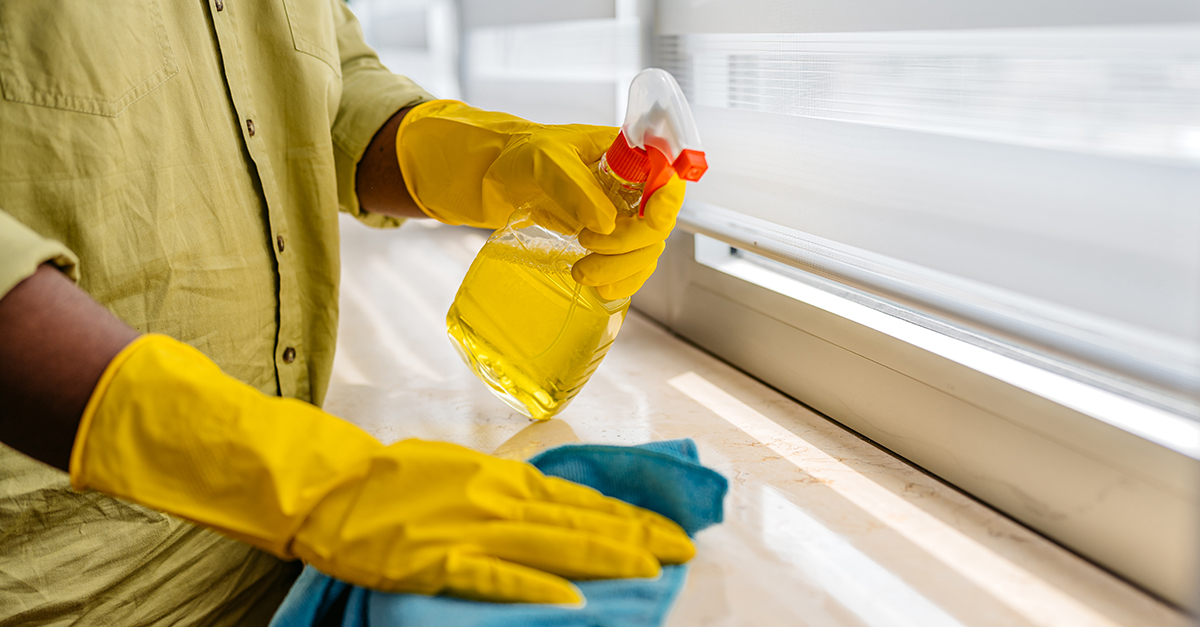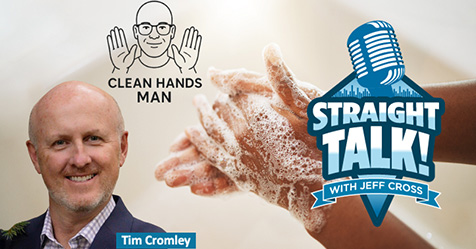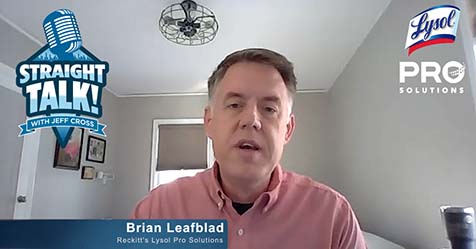Cleaning and disinfecting products are necessary to keep your facility hygienic and help protect its inhabitants from infectious diseases spread by germs on surfaces. However, like any tool, disinfectants are most effective and safe when cleaning crews use them properly.
CMM interviewed Kirsten Hochberg, a senior specialist within CloroxPro’s Clinical and Scientific Affairs team, about the proper use of common disinfectants. Her work is focused on providing technical expertise to help people create safe cleaning and disinfection practices in public spaces. Hochberg earned a Ph.D. in immunology and a Bachelor of Science in biochemistry. She is currently a member of the Cleaning Industry Research Institute (CIRI), the American Public Health Association (APHA), and the American Association of Immunologists (AAI).
What are the benefits of using disinfectants with quaternary ammonium (quats)?
Kirsten Hochberg: Active ingredients, such as quaternary ammonium chlorides, are very effective against bacteria and viruses. Quaternary ammonium chlorides poke holes in
bacterial membranes, making them effective for disinfecting surfaces and preventing the spread of pathogens. Most quat-based products can easily wet a surface, don’t evaporate too quickly, have
good stability , and are compatible with many other cleaning ingredients.
How can you safely and efficiently use quats?
Hochberg: All EPA-registered disinfectants are safe when used as directed. Required personal protective equipment (PPE) is dependent on specific product formulas, so always refer to a product’s label for PPE and safety requirements. Commonly recommended forms of PPE might include disposable gloves or eye protection.
Following instructions for contact times is essential for quats to kill pathogens. When using a quat-based product, make sure it remains on the surface for the listed contact time and wait to wipe
away excess liquid with a clean cloth after the contact time has been reached.
What are the benefits of using disinfectants with bleach?
Hochberg: Bleach is a fast-acting oxidizing agent that has broad-spectrum antimicrobial activity against a wide range of microorganisms including bacteria, bacterial spores, viruses, and fungi. It
quickly reacts with organic material including proteins, lipids, carbohydrates, DNA, and RNA, which ultimately leads to cell death.
Bleach can be used on a variety of hard, nonporous surfaces, including stainless steel, plastics, glazed ceramics, glass, porcelain, and other materials, making it a versatile product for cleaning teams.
What is the safest way to use bleach?
Hochberg: Always refer to a product’s label for PPE and safety requirements. Additionally, always dilute strictly in accordance with the product directions, depending on its use and the surface
where it will be applied.
What types of alcohols are used in disinfectants and what are their benefits?
Hochberg: The two most common types of alcohols used in disinfectants are ethyl alcohol and isopropyl alcohol, and both can be effective at killing bacteria and cold and flu viruses.
What are the benefits of using disinfectants with hydrogen peroxide?
Hochberg: Hydrogen peroxide disinfectants are ideal for daily use in high-turnover areas and can be used on hard and soft surfaces. These disinfectants can be effective on numerous germs, including C. auris and other antibiotic-resistant pathogens, making them suitable for clinical use, daily patient room cleaning, disinfection of medical devices, terminal cleaning, and on-the-go
disinfecting.
What are the benefits of using disinfectants with organic acids, such as lactic or citric acids?
Hochberg: Organic acids are a great choice to tackle stains and mineral deposits. They’re generally milder to use, as they are a natural product derived from plant sources, which also make them more eco-conscious. These disinfectants can be ideal for everyday use in public spaces from schools and offices to hotels and fitness centers.
Are instructions for safely and efficiently using disinfectants with hydrogen peroxide, acids, and alcohols like your previous advice?
Hochberg: Yes. Always follow product instructions listed on the labels and wear the required PPE. Be sure to review the product labels to confirm the active ingredients and the safest
ways to use them. Don’t mix cleaning products or disinfectants unless specific directions are provided by the manufacturer.
With any disinfectant, regardless of the active ingredient, there will be differences between formulations that can impact efficacy, surface compatibility, safety, and the user experience. It is crucial to always follow the directions on the product label and to choose the right product for your needs.



